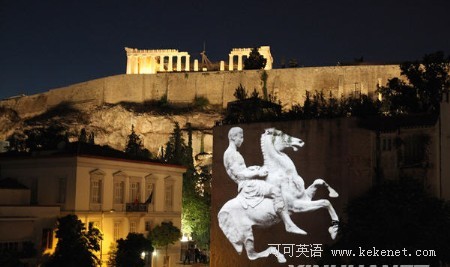
In 447 BC, he committed the new empire and its wealth to its construction. He brought together three unique artistic talents, Phidias the sculptor, and architects Ictinus and Callicrates. Together they imagined a complex of temples and public places to be built along classical ideals but exceeding them in scale and perfection. Amazingly they worked without architectural plans or drawings as we understand them today. Instead they were guided by a set of codes and principles dictated by the art of geometry.
公元前447年,他全力建設(shè)新帝國,由聚斂財富到興建土木。他請來了三位不同凡響的藝術(shù)天才-雕刻家斐迪亞斯,建筑師艾士提努、卡利克拉提斯。他們一起設(shè)想如何將神殿和公共場所組合到一起,并決定沿用古典設(shè)計,但將在規(guī)模和美學(xué)上進行突破。神奇的是,他們當(dāng)時既沒有諸如我們今天的建筑計劃也沒有藍(lán)圖,而是依據(jù)一套幾何學(xué)的符號和法則來施工。


















